| |
| ELVIRA MARTINEZ DE MELERO and MARIA ARIZA: Selection of works from 100 Years of Creations by 20 Women Artists (1922 to 2022) |
ELVIRA MARTINEZ, VIUDA DE MELERO
The distinguished painter, writer, activist and educator Elvira Martínez was born in Havana in 1858. In 1883, Elvira Martínez was part of the select first group of women who attended the classrooms of San Alejandro, shortly after reforms introduced by Miguel Melero allowing women access to artistic education in 1879. Ambitious and trailblazing, she demonstrated an early aptitude for the arts.
In 1885, Elvira Martínez married Miguel Ángel Melero. That same year, the newlyweds traveled to Paris, after Elvira received an artist’s grant from the Provincial Council to study in the City of Lights. The two were enamored with the culture and the arts, and quickly became enmeshed in the Parisian scene. The revolutionary techniques being explored by painters in 1880’s France were a departure from the more traditional, colonial conventions of Cuba at the time, and greatly broadened the painter’s horizons.
Miguel Ángel’s premature death in 1887 disrupted Elvira’s idyllic vision of the future. However, she chose to persist in her art, moving briefly to the United States and studying with the Arts Students League of New York. This institution not only allowed for female pupils, but also guaranteed that the Board of Control be equally divided between men and women. This approach to artistic equity between the sexes left an impression on the painter, and would further inform her activities upon returning to Cuba the following year.
|
|
|
In 1888, Martínez was welcomed back into the Cuban San Alejandro Academy, where she continued her studies until 1892. In 1892, she began her work as a teacher in private schools, and eventually held a national position in the Cuban Government as Inspector of Drawing and Modeling of Public Schools. In the days before the ubiquity of camera technology, illustration and drafting were considered necessary to all curriculums, from the sciences to cartography, architecture, and the arts. Martínez was in a position of powerful influence uncommon for a woman at the time.
|
|
|
|
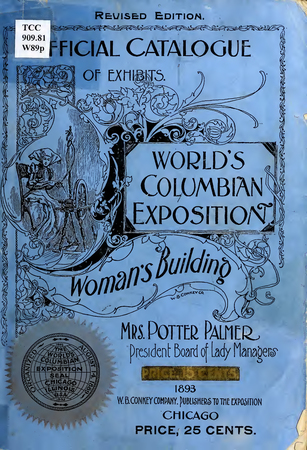 |
Cover of the official catalogue of exhibits,
World's Columbian Exposition, Woman's Building
Chicago, IL, 1893.
|
|
In 1893, Elvira Martínez exhibited four paintings in the Columbian Exposition, a World’s fair held in Chicago to celebrate the 400th anniversary of Christopher Columbus’ arrival in the new world. Among the other artists in exhibition were some of the most internationally important painters of the day – Winslow Homer, John Singer Sargent, Frederick Stuart Chase, George Inness, Thomas Eakins, Mary Cassat, and Childe Hassam, to name a few. Elvira Martínez was the only Cuban artist represented. Eleven years later, she would exhibit in another major international World’s Fair, the St. Louis Louisiana Purchase Exposition of 1904, celebrating the 100 year anniversary of the Lousiana Purchase. Per the organizers of the event, it was the largest arts exposition in the country’s history to date. The show had a considerable presence of Cuban artists, representing their country at an official American event for the first time since the island gained independence.
|
|
|
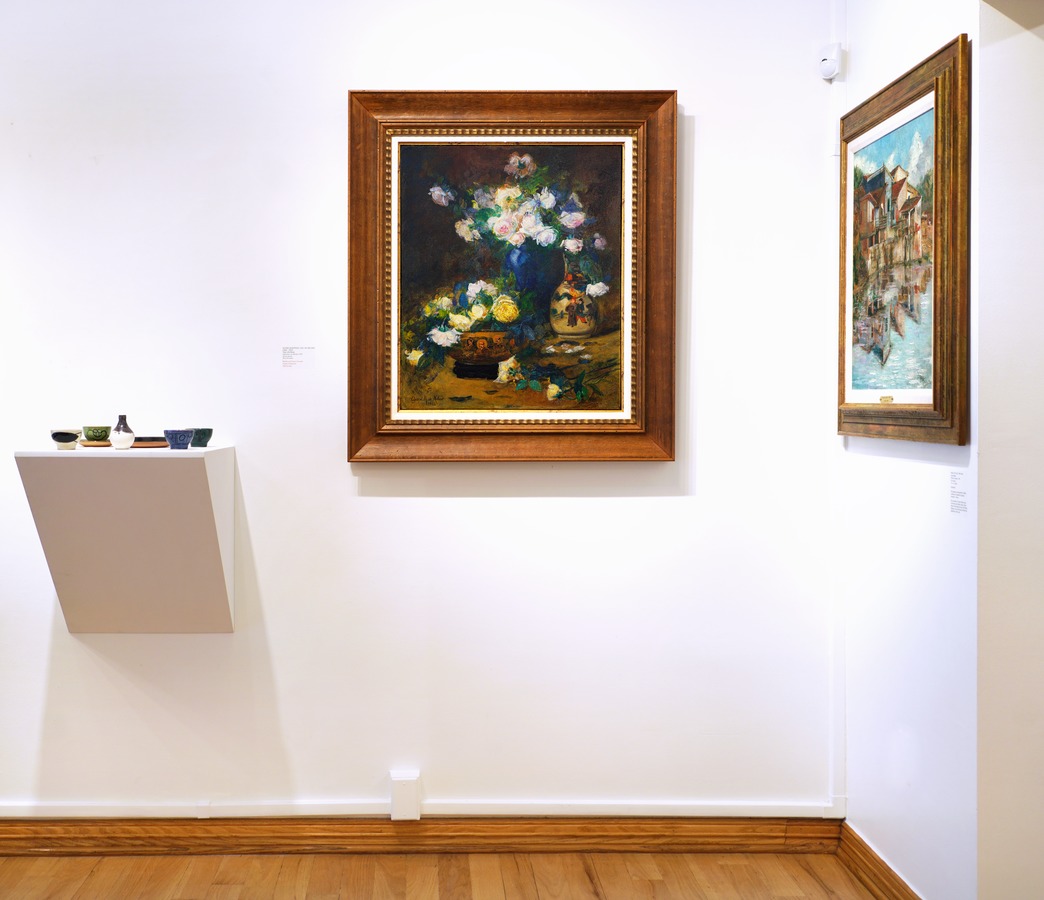 |
Painting by Elvira Martinez de Melero located in our main showroom as part of the 100 Years of Creations by 20 Women Artists (1922 to 2022) show.
|
|
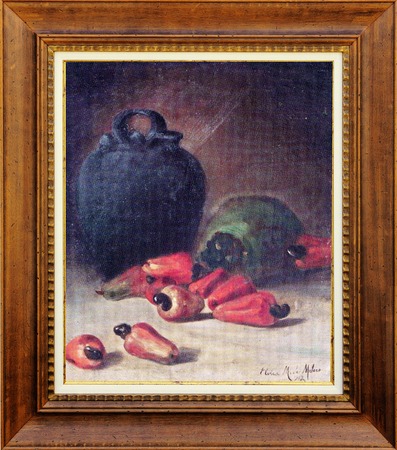 |
Elvira Martínez de Melero (1858 – 1925)
Marañones
(Marañones), 1912
oil on canvas
55 x 45 cm
Collection of Museo Nacional de Bellas Artes de Cuba
|
|
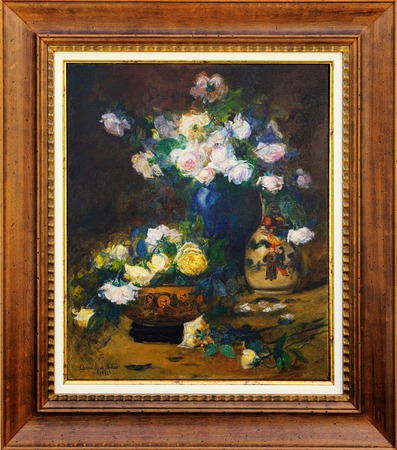 |
Elvira Martínez de Melero (1858 – 1925)
Vases with Roses
(Jarrones con Rosas), 1922
oil on canvas
29 x 24 inches
|
|
Elvira Martínez’ most representative work recreates tropical fruits, flowers, and magnificent views of the bay of Havana in compositions that express the painter's fondness for Oriental and Hindu art, built plane upon plane, with a vivid purity of color. Further, her painting style owes a debt to her academic studies and her time spent absorbing inspiration in Paris and the United States.
Because of her prominence and ability, Elvira Martínez de Melero was among the artists and intellectuals involved with the Academia Nacional de Arte y Letras, (The National Academy of Arts and Letters), an agency established by President Menocal in 1914, designed for the promotion of the study of literature, music, painting, sculpture, and architecture. The group organized exhibitions and conferences, published grants and scholarships, and published and promoted lectures to cultivate a strong culture of arts and literacy on the island. During her tenure with the National Academy of Arts and Letters, Elvira Martínez de Melero wrote, published, and read her influential discourse, Art As An Exponent Of The Culture Of A People, in April of 1916.
|
|
|
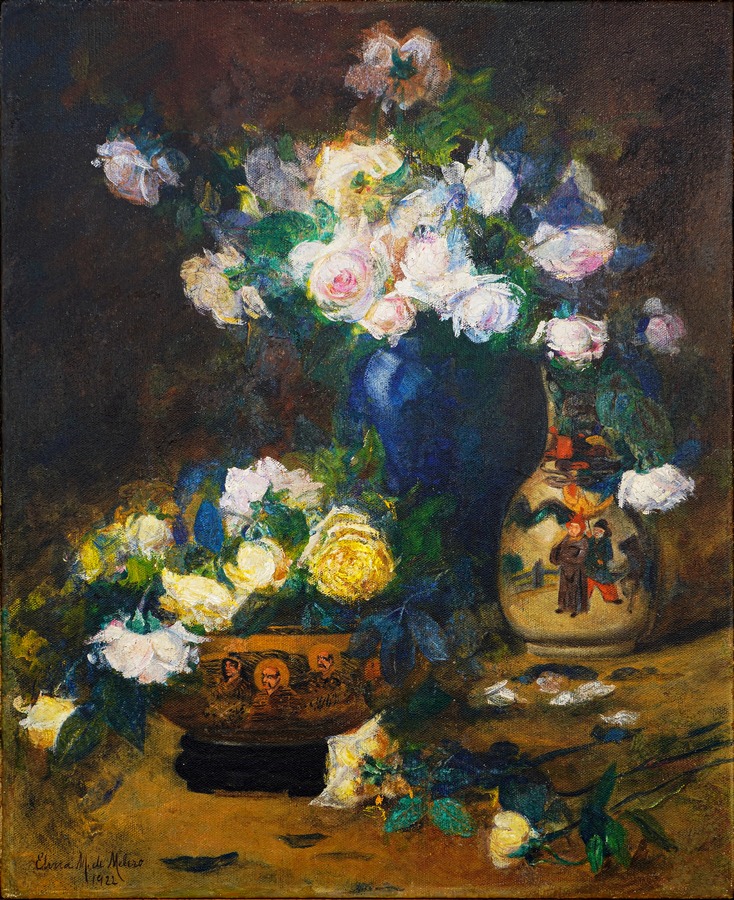 |
Elvira Martínez de Melero (1858 – 1925)
Vases with Roses
(Jarrones con Rosas), 1922
oil on canvas
29 x 24 inches
|
|
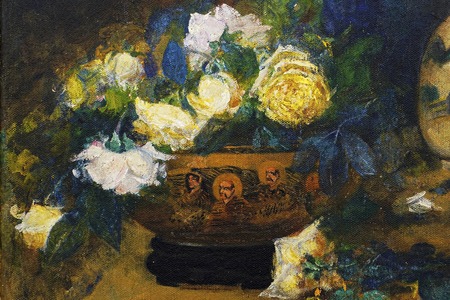 |
Detailed look at the faces and roses on the flower vase.
|
|
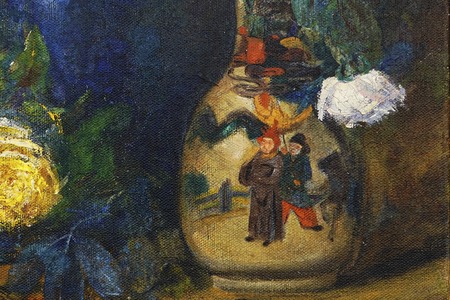 |
Detailed look at the two characters on the flower vase.
|
|
Like many other virtuosic female painters of the time, Elvira Martínez was marginalized by critics, who placed her in her deceased husband’s shadow or categorized her as a hobbyist. Eager to prove them wrong, Martínez continued to paint and exhibit in prestigious shows. In the years 1917, 1918, 1922, 1924, and 1925, Martínez de Melero exhibited in the Salons of the Association of Painters and Sculptors, considered the most important showing of fine art on the island at the time. In addition, she saw her contributions published in well-circulated magazines such as El Fígaro and Bohemia.
|
|
|
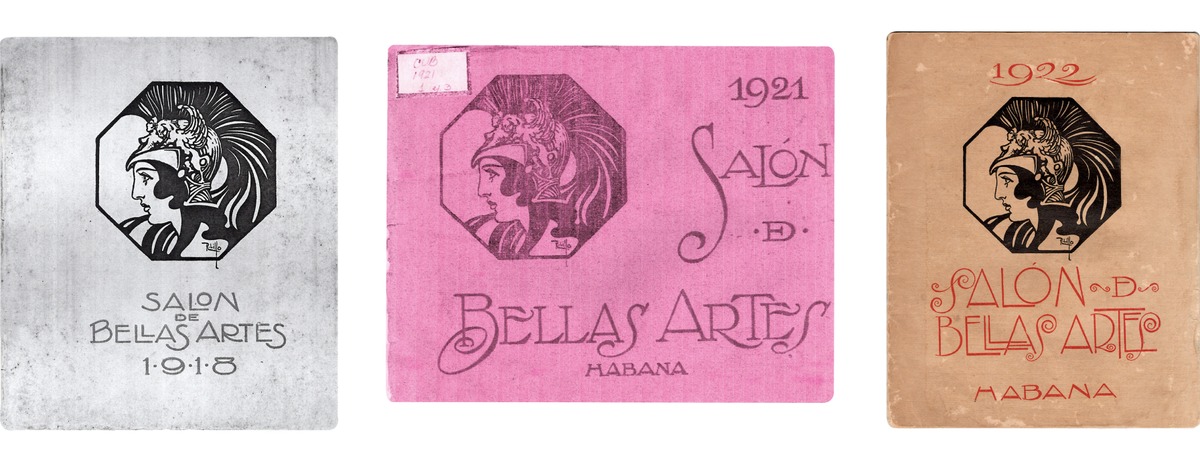 |
Cover of the official catalogue of exhibits,
Salón de Bellas Artes, Habana, Cuba, 1918, 1921, 1922.
|
|
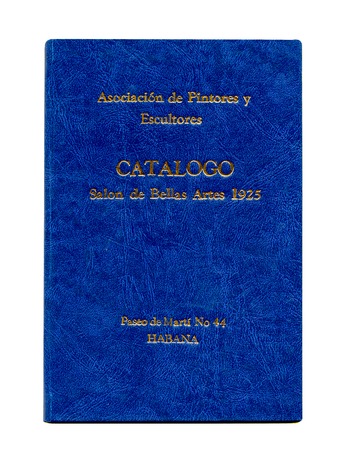 |
Cover of the official catalogue of exhibits,
Salón de Bellas Artes, Habana, Cuba,1925.
|
|
In 1923, Martínez participated in the First National Congress of the National Federation of Women, held in Havana. This early feminist conference was attended by the best and brightest female intellectuals, painters, writers, and teachers of the time from a broad spectrum of ideologies. Participants demanded the right to women's suffrage, social rights for women, laws protecting children, improved education and school facilities for children with special needs. In addition, the Congress demanded actions for the beautification of the city of Havana. It was the first such congress in Cuba, and indeed, in all of the Spanish-speaking Americas.
Elvira Martínez, painter, teacher, feminist, and pioneer, died in 1925. In 2016, her work was included in the exhibition "Ardid para engañar al tiempo", held at the National Museum of Fine Arts in Havana in 2016.
-NICO HOUGH
|
|
|
MARÍA ARIZA
The pioneering Afro-Cuban painter María Ariza y Delance was born in Havana in 1873. She completed her primary and secondary schooling at home under the guidance of her father, the architect Antonio Ariza y Pereira. In 1907 she departed to Europe to take painting lessons. She studied at the Julien Academy in Paris. For 18 years, she resided in Spain, France, and Belgium, devoting herself to the study of Fine Arts.
In 1917, 1918, 1919, 1921, 1927, and 1928 she participated in the group exhibits of the Fine Arts Salon in Havana. In 1944 she exhibited her work at the first Juan Bautista Vermay Salon, and in 1949 her paintings were included in the exhibit La Mujer en la Plástica (Women in the Plastic Arts) at the Lyceum, Havana. Her prizes include the Figure and Composition award of the National Academy of Arts and Letters of Havana, granted in 1919 for the work Inútiles Consejos which she created in Madrid. In 1926, María Ariza became a tenured professor of the San Alejandro Academy of Arts, teaching courses in art history. In 1931, she also occupied a post as administrator of the Academy under the directorship of master painter Armando Menocal.
|
|
|
Her artistic activity as a painter encompassed diverse themes, among the most important, landscapes of the Cuban countryside and nudes. With her piece Estudio, María Ariza participated in the historic 1940 exhibition Trescientos Años de Arte en Cuba (Three Hundred Years of Art in Cuba).
In 1944, she exhibited paintings in the first She died in Havana on September 7, 1959. In 2022, work by Ariza was selected to be included in the major show, El Pasado Mío / My Own Past: Afrodescendant Contributions to Cuban Art at the Ethelbert Cooper Gallery of African and African American Art, Harvard University, Cambridge, MA.
-RAMÓN CERNUDA
|
|
|
|
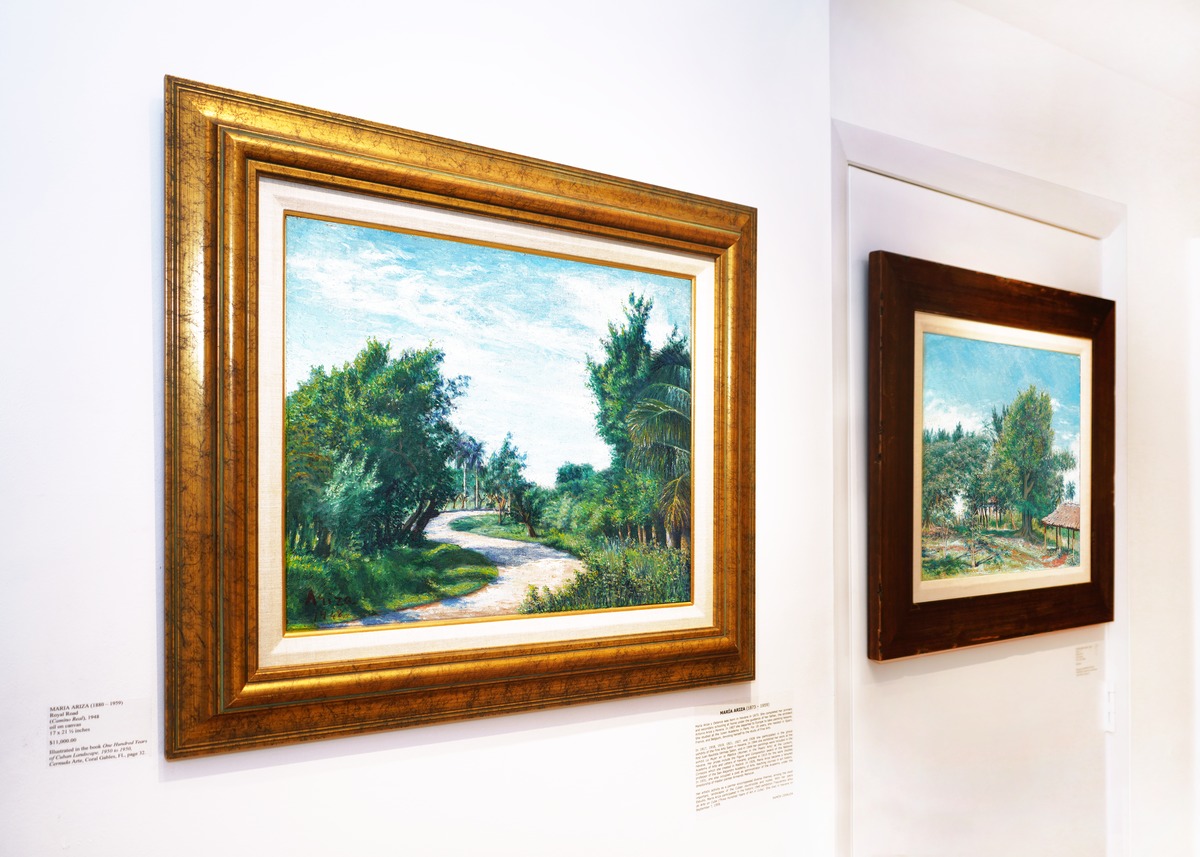 |
This section presents a classical vision of two landscapes of the Cuban countryside.
|
|
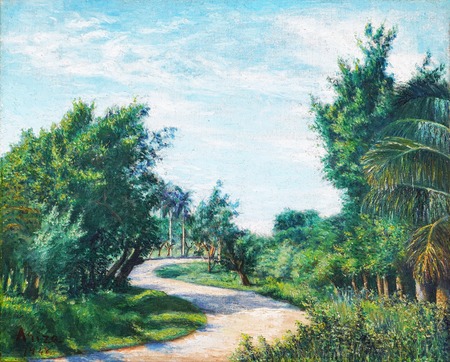 |
María Ariza (1873 - 1959)
Royal Road
(Camino Real), 1948
oil on canvas
17 x 21 1/2 inches
|
|
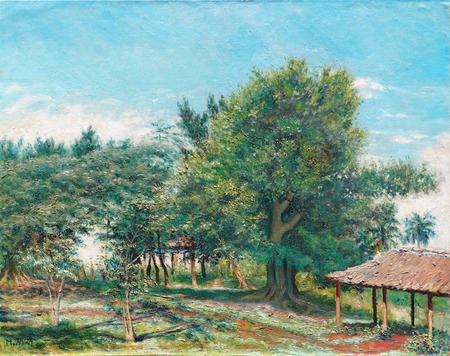 |
María Ariza (1873 - 1959)
Back Yard
(Patio), 1931
oil on canvas
16 3/4 x 20 1/4 inches
|
|
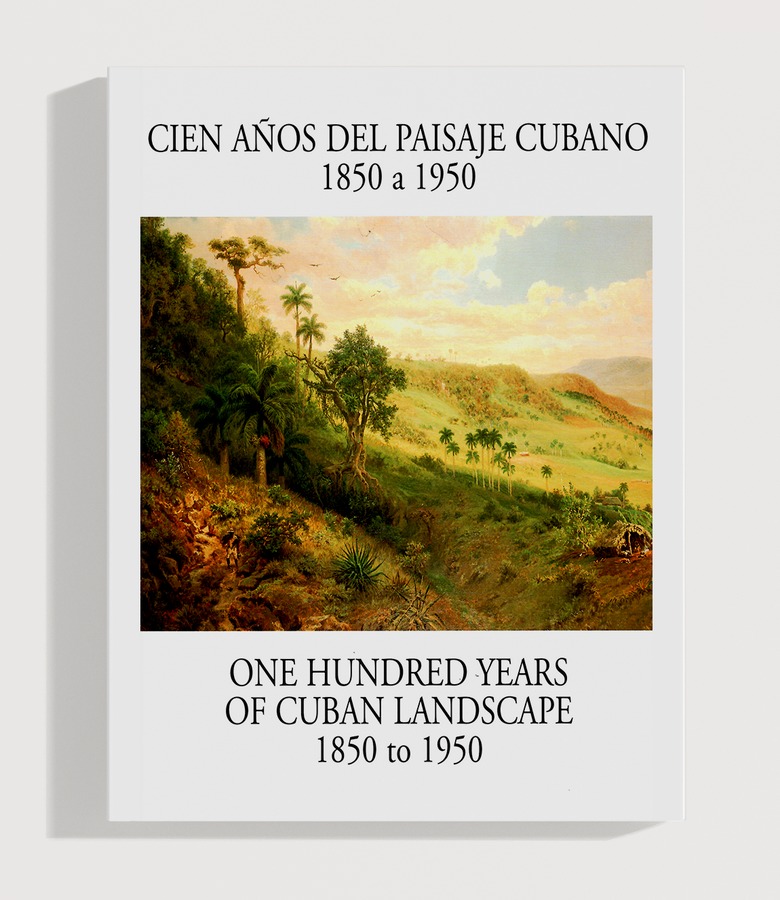 |
Exhibition catalog for Cien Años del Paisaje Cubano, 1850 a 1950, Painting by María Ariza page 32, Cernuda Arte, Coral Gables, FL, December 2001 - February 2002.
|
|
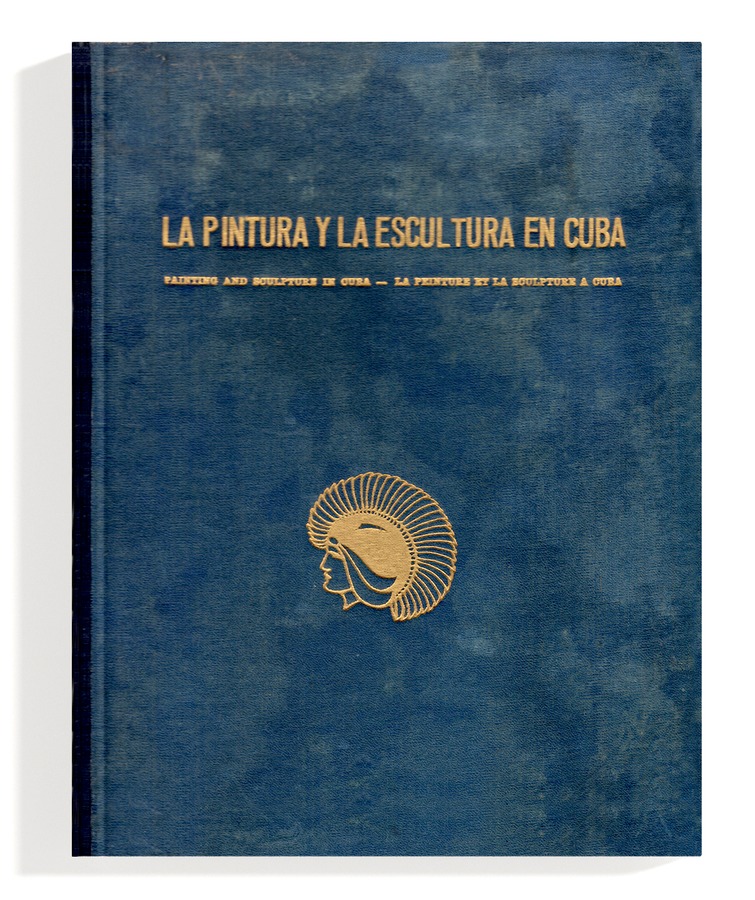 |
La Pintura y La Escultura en Cuba, Essay on María Ariza pages 137 and 140, Editorial LEX, La Habana, Cuba, 1952.
|
|
|
| |
| |
| |
| Copyright 2002-2025, Cernuda Arte. All Rights Reserved |
| |
|
| |
